Speaking at the firm’s annual general meeting in Lausanne, Switzerland on Thursday, Nestlé chairman Peter Brabeck-Letmathe spent much of his time talking about the “decline of the consumption of processed food in the United States” and the fact that shoppers “are no longer spending as much on traditional food products or in large retailers”.
Carbonated soft drink consumption has dropped 14% since 2004 and many big legacy food brands - including some of Nestlé's frozen food brands (Stouffer's, Lean Cuisine) - are no longer resonating with consumers in the way that they used to do, he said.
The reaction of investors such as 3G and Berkshire Hathaway (which bought Heinz in 2013 and are now seeking to merge it with Kraft) has been swift, he said. “[They] have pulverized the food industry market, particularly in America, with serial acquisitions, first in the beverages sector with the creation of the world’s largest brewery, Anheuser Busch/InBev, then in the foodstuffs sector with the purchase of Burger King, Tim Hortons and Heinz.”
3G’s partners are known in our industry for ruthless cost-cutting
Heinz, which is merging with Kraft, will become the third largest food company in the US in terms of sales after PepsiCo and Nestlé, but ahead of Coca Cola, General Mills and Kellogg’s, he noted.
But neither is generating organic growth, he said: “Both Kraft and Heinz posted subdued growth with products that were extremely attractive in the past but are not sufficiently adapted for the future.”
Nestlé Q1, 2015
In the first three months of 2015, “there was a slow start to the year” in North America, said Nestlé. “The frozen meals category remained challenged, especially Lean Cuisine. We have taken action to reposition our brands, addressing all elements of the marketing mix, enhancing their relevance to consumers. We expect these initiatives to bring back momentum to the frozen category over the course of the year. Growth in North America came from Coffee-mate, from super-premium and snacks in ice-cream and from baking, driven by innovations in morsels and frozen cookie dough.”
Their focus, therefore, is on efficiency, and improving margins, he said: “3G’s partners are known in our industry for ruthless cost-cutting and have already proven numerous times that they are capable of reducing operating costs in particular by between 500 and 800 basis points, which has a revolutionary impact on all the other members of the industry.
“Nonetheless, although profitability for a company like Heinz is indeed greatly improved today, the same is not true for sales growth, which declined by 4.6% in 2014.”
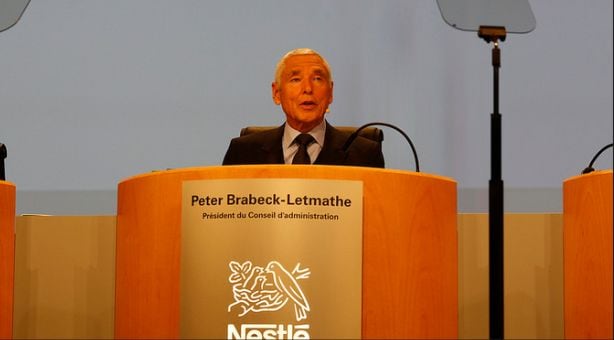
Nestlé Waters has become the third-largest beverage company in the United States
While Nestlé is subject to many of the same pressures, it is better positioned than many large rivals in that its portfolio is better aligned to changing consumer trends, he said, noting that in the beverages market, a lot of the slack from declining soda sales had been picked up by bottled water – a market in which Nestle is a dominant player.
“Nestlé Waters has become the third-largest beverage company in the United States, notably thanks to our brands Nestlé Pure Life, Poland Spring and in particular S.Pellegrino and Perrier.
“Nutrition, health and wellness is proving increasingly every year to be the main growth driver. We should be pleased that we positioned ourselves as a leader 15 years ago, which has enabled us to continue to grow, even though some of our activities are not yet meeting consumers’ expectations, as we have painfully experienced with our frozen products business in the US. However, we firmly believe we have found the solution for this in 2015."
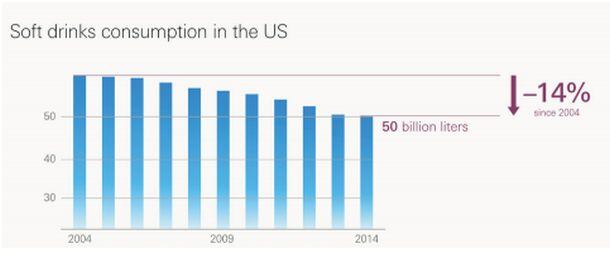
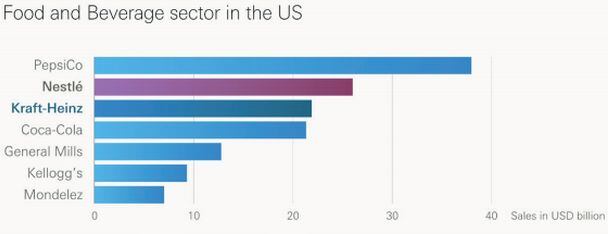
Portfolio re-adjustment
So how are thing looking for 2015/16?
The prospect of a new packaged food giant in the form of Kraft-Heinz, along with the recently-created coffee behometh Mondelez-Douwe Egberts, coupled with the “spectacular growth of some multinationals in developing countries”, mean Nestlé must do two things if it wants to remain the “undisputed leader in our industry”, said Brabeck-Letmathe.
“First of all, an acceleration in our policy of adjusting our portfolio of activities, and at the same time, better use of our size.”
As for portfolio adjustment (Nestlé has been selling underperforming businesses including PowerBar and the bulk of Jennie Craig), he said, “Management is working constantly to revalue our products and services worldwide, by making choices that transform our portfolio of activities to reflect our positioning in the health and well-being sector, while the Board of Directors has played an active role in creating new growth platforms.
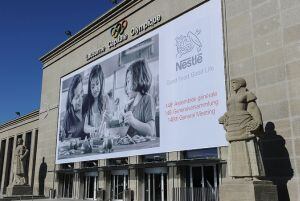
“We have expanded the limits of ‘Nutrition, health and wellness’ by creating Nestlé Health Science, with the aim of giving nutrition a major preventive and therapeutic role, then Nestlé Skin Health, which should become the world leader in skin health.”
We are obliged to make better use of our size
With regard to the second point – capitalizing on scale to drive efficiency – he said, “We firmly believe that we continue to benefit from our decentralized structure, which enables key decisions to be taken as close as possible to consumers; but we also believe that we can and, particularly given the new competitive situation, that we are obliged to, make better use of our size.”
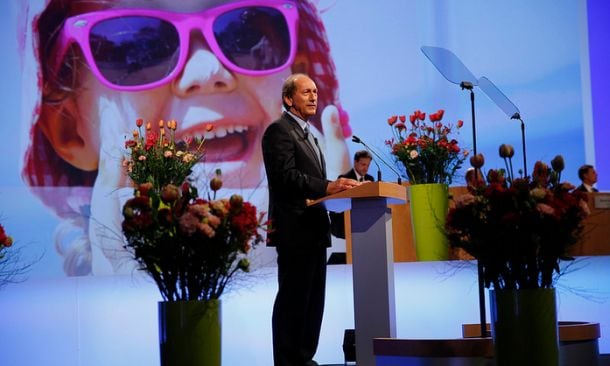
Overall, we outperformed the market
With that said, Nestlé put in a solid performance in 2014 relative to its competitive set, CEO Paul Bulcke told shareholders: “In 2014, our total Group sales amounted to 91.6bn Swiss francs, with organic growth of 4.5%. Our trading operating profit margin was up 30 basis points in constant currencies.
“The group delivered a net profit of 14.5bn Swiss francs and our earnings per share were CHF 4.54. We can call these solid results; they build on the good growth of past years and were delivered in a soft trading environment. Overall, we outperformed the market.”
Nestlé is the largest food company in the world and the second largest food and beverage company in terms of US sales behind PepsiCo, with a portfolio of brands including Stouffer's, Buitoni, Tombstone, DiGiorno, Hot Pockets, Lean Cuisine, Poland Spring, S.Pellegrino, Perrier, Pure Life, Nescafe, Dreyer's, Edy's, Gerber, and Butterfinger.
